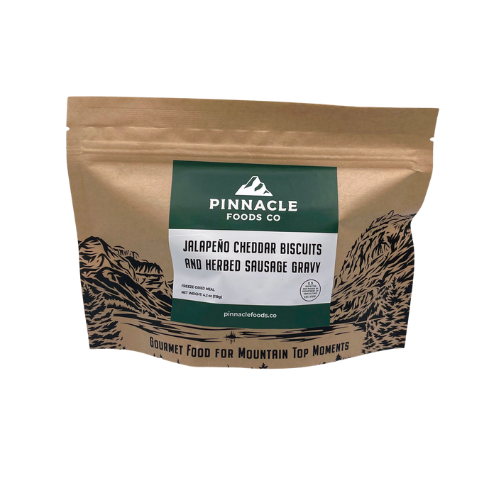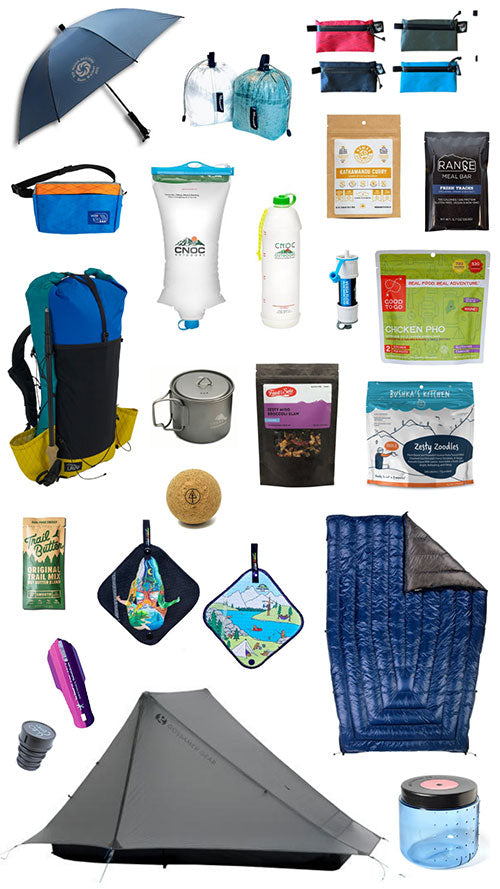
Staying properly fed and watered while out on the trail are two important, albeit very nuanced and individualized aspects of any successful hike.
Active muscles require extra fuel, so most of us need to increase the amount of calories we consume while participating in physically demanding activities such as hiking outdoors all day — with or without a heavy backpack.
Getting an adequate amount of nutrition on trail not only helps us perform, rest and recover better, but it also keeps us safe by reducing the chance of injury, burn out and poor decision making.

Since many of us are continually looking for ways to lower our base weight and save pack space, it's not surprising that some hikers err on the side of bringing less food rather than more.
For shorter day hikes, or even overnight adventures, some people can get away with eating less than the body demands; but for multiple days and weeks of sustained physical efforts, it's not optimal to under feed the beast.
Sooner or later, your body, mind and moods will start to let you know that something is amiss.

Of course, there can be a myriad of reasons why the following signs and symptoms pop up in the body (ie. underlying health conditions, previous injuries, overexertion, etc.) but increasing caloric intake and fluid consumption can be a safe and simple place to start the quest for curing what ails you.
Here are 5 signs that you just might be under-eating while out on trail.
Dizziness, Shakiness and/or Extreme Fatigue

Since hiking heightens the body's demand for glucose, our body’s preferred fuel source, we need to make sure we keep our stores topped up in order to keep everything functioning properly.
Long periods of high output without adequate hydration and nutrition can lead to exercise induced hypoglycemia (EIH) — the medical term for low blood sugar induced by exercise.
This plummet in your blood sugar levels doesn't leave enough glucose to fuel the system properly, and can make you feel dizzy, weak, shaky and just downright drained.
Hiking in this condition is unhealthy and unsafe, and increases the risk of injury and illness. If untreated, EIH can lead to fainting and seizures, so it's best to take a break if you are feeling off and address the situation.
Some easily digestible carbs, like honey or maple syrup, along with some trail mix, pepperoni sticks or an energy bar can go a long way in a short amount of time, staving off EIH before it becomes a full blown situation.
Trouble Falling and/or Staying Asleep

When the body is short on calories, getting proper rest can become a challenge — and we all know that sleep is our superpower.
Inadequate nutrition can negatively impact our slow-wave sleep aka deep sleep, a phase that is essential for muscle recovery and restoration.
Low caloric intake can also cause the stress hormone cortisol to spike at irregular times, like in the middle of the night or reaaaaally early in the morning, waking us up and disrupting our ability to fall back asleep.
Poor sleep can impair cognition leading to suboptimal decision making, increased fatigue, irritability, injuries, illnesses, and a host of other side effects.
Loss of Enthusiasm

Sometimes when it comes to adventure planning, we bite off more than we can chew (pun intended), and once on the trail, we become overwhelmed by the journey at hand.
This overwhelm can lead to doubting everything … your ideas, your trajectories and your ability to complete the quest. Maybe you start looking for ways to shortcut the miles, or opt out of the adventure altogether.
This is totally normal, happens to most of us at one point or another, is sometimes a side effect of fatigue, and usually a sign that a rest day might be best.
Sometimes, however, it's an indication that you're actually just depleted nutritionally.
If you're no longer feeling up to the challenge at hand, or find yourself looking for the 'easy way out', consider upping your calorie intake to see if that gives you the boost of enthusiasm you need.
Irritability

Are you experiencing a sudden shift in your otherwise sunny disposition? Are things that never used to get your goat driving you batty?
Irritability, when caused by a lack of caloric intake, is often referred to as being ‘hangry' — a combination of being hungry and angry.
Sure, irritability can be a result of many factors other than nutrition, but if you can't put your finger on the culprit, EIH could be part of the problem.
Chow down on some healthy fats like salted cashews or hard cheeses, or throw in some pea powder or cured meats to up your protein, and see if that lightens the mood.
Constantly Feeling Hungry

This might sound like an obvious one, but if you don't have a lot of practice tuning into your bodily signals, or you are new to physically demanding activities, you might be missing the message.
Hunger signals can be attributed to hormonal shifts in the body that happen as a result of under-eating. They are our body's way of encouraging you to eat up.
Since some hikers have a hard time stomaching solid foods in high elevations, scorching heat or during hard outputs, turning to high calorie, liquid nutrition can be a better option than skipping meals altogether.

Hunger pangs can also be associated with not drinking enough water, so it's a good idea to keep topped up on your hydration demands by sipping on electrolyte enhanced fluids.
Pro tip: Try adding a tsp of Embark Maple Syrup per 500 ml of water to your drinking flask to get your fix of sodium, simple carbs and boost fluid absorption rates
Noshing Notes

So, how do you know how many calories you'll need for your hike? The answer is nuanced and highly individualized, as everyone has different genetics, adaptations and dietary demands.
It’s better to pack more food and snacks than you think you'll need. This way, you're covered if you need to spend an extra day on the trail, for whatever reason, or if you need to bolster your pre-rationed meals.
If your multi-day trek involves opportunities to resupply, you can adjust your caloric intake as you go, picking up more food at grocery stops, restaurants or convenience stores along the way.
If you’re training for your epic adventure by day hiking, it can be super helpful to track the amount of calories you consume on your training days, as well as note what sounded appetizing after several hours of hard effort.
When packing for your multi-day trip, you can figure out how many calories you’ve allotted per day by adding everything up in a tracking app, like Chronometer.
Armed with that information, you can then compare the amount of caloric intake you've allowed for your days on the trail to how much you ate on your training days, as well as how much you consume on a daily basis.
Depending on the terrain, temperature, distance, and demands on your body, you could need as little as 500 more calories per day or as many as 2000 more calories per day, compared to normal living.

While it can be easy to use physically demanding activities as an excuse to binge on highly processed snacks and junk food, it's in your body, mind and mood’s best interest to incorporate a balance of healthier, whole foods when out on the trail.
Reach for no sugar added dried fruits like dates, mangoes, apricots and figs, or go for salted nuts and nut butters, hard cheeses and protein powders to bolster your nutriment intake. Your rest, recovery and overall performance on trail will positively reflect your healthy decisions!
Ali Becker is a freelance adventure writer and narrative storyteller who shares compelling conversations about personal transformations, overcoming limitations, wellness education and adventurous situations. You can follow her rambling adventures on social at @thisisalibecker.


















1 comment
Tory Korthuis
Well written. I sometimes forget the small signs my body gives me. Thanks for the reminder and all so the pro tip. Will have to give maple syrup a try.